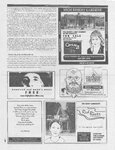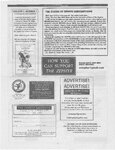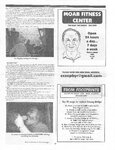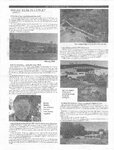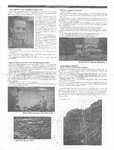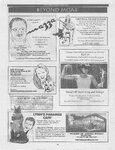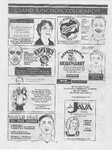| OCR Text |
Show WHAT ELSE IS. GONE? THE ZEPHYR/JUNE continued... DEMISE of the CANYONLANDS CAFE For decades Moab had three greasy spoon cafes to choose from—Milt’s Stop n’ Eat, the Westerner Grill, and the Canyonlands Café. They were also the source of limitless information and gossip. My first Moab meal was at the Café. The counter was conducive to conversation. . The winter of 92-93 saw the end of the Canyonlands Café. It was the winter that Moab began its transformation from a.rural town to an urban population center. From one end of Main Street to the other, empty lots became building sites. Seven motels sprouted in three months. Old buildings came down. New buildings went up. The sight of particle board buildings stretched to the horizon line. Among the casualties was the Café. The swinging bridge at Arches NP in the mid '90s LAST DAYS at OLD CITY MARKET Until 1991, City Market resided across the street and a block or so north of the current store. Its size seemed more than adequate for a town Moab’s size. When the new store opened, we couldn’t find a damn thing and we marveled at the ridiculous size of the parking lot, which was three or four times larger than the one we were used to. “They'll never fill that lot up,” we complained. “What a waste of asphalt.” We had forgotten the old adage, “Goldfish grow to the size of the bowl.” By 2000, people were complaining it was too small. seer _ February 1993 ROCKY NEWELL....AHEAD of his TIME Rocky Newell was the “Father of Recycling” in Moab. He did it partly for the money (“Jimbo, if I can’t make an extra $3000 a year from junk and garbage, it’s a bad year.”). But it was more than that-he couldn’t bear to see anything thrown away that could be fixed. He went to the dump regularly and came home with everything from broken toasters to vacuum cleaners. He could repair almost anything and then Rocky sold them at his yard sales. When he went to work as a maintenance man at Arches National Park, there was no recycling program there at all. Rocky found an old garbage can, I routed a “Please put your aluminum here” sign for him, and Rocky started collecting cans. But the recycle bin was not enough. During his lunch hours, Rocky would climb into the park garbage truck and find the extra aluminum from the park visitors who had missed the bin. And when he checked the campground trash cans, Rocky retrieved anything he thought salvageable. And he believed in sharing. He dropped a fair number of Coleman stoves and sleeping bags at the Devils Garden trailer, which I appreciated. But when he started delivering semi-fresh fruits, vegetables and meat products, I became a bit skeptical. “There’s not a damn thing wrong with this food!” Rocky would protest, and I’d meekly agree. Later, I figured, I’d just throw it in the trash, which was really stupid because he’d find it the next day. Ultimately, I learned to take Rocky’s food contributions far out into Salt Valley and several hundred feet from the road. ROCKY NEWELL... One of Moab's first and most creative recyclists. OLD CITY MARKET At the time it seemed big enough. So did the parking lot... IN THE BEGINNING there was MILT’S STOP & EAT Milt and Audrey Galbraith opened their “Milt's Stop n’ Eat” on Labor day in 1954. He arrived just as the Uranium Boom was transforming the town. He borrowed the money to build the small diner on a handshake and the story goes that he paid off the debt ina year. At the time, Main Street ended at Center Street, To go south the highway went east to 400 East, then past Milt’s on Mill Creek Drive. Milt was there, 24 hours a day, seven. days a week in the beginning. He slept on a cot, willing to be rousted from sleep for a lonely trucker at 2 am. c Milt and Audrey ran the café until the late 70s. Milt was known for his Chili cheeseburgers and his magnificent Denver Specials. He served his last Special with as much pride as the first. THE DEMISE of the DELICATE ARCH SWINGING BRIDGE Dewey Bridge hasn't been the only suspension bridge in Grand County to meet an untimely end. For almost half a century, this swinging foot bridge over Salt Wash served hundreds of thousands of hikers to Delicate Arch at Arches National Park. The bridge was built in the 1950s and there is reason to believe Ed Abbey may have helped in its construction. Though the wooden planks were washed. away by numerous flash floods over the years, the two steel towers and the cables always managed to survive. It was usually a three or four day job for the maintenance crew at the park to replace the floor planks and put the bridge back into operation again. A few years ago, however, the National Park Service decided to replace the old swing bridge with a more “permanent” structure. At a cost of several hundred thousand dollars, the new bridge could still not withstand the floods and the trail was closed for weeks in 2006 |




